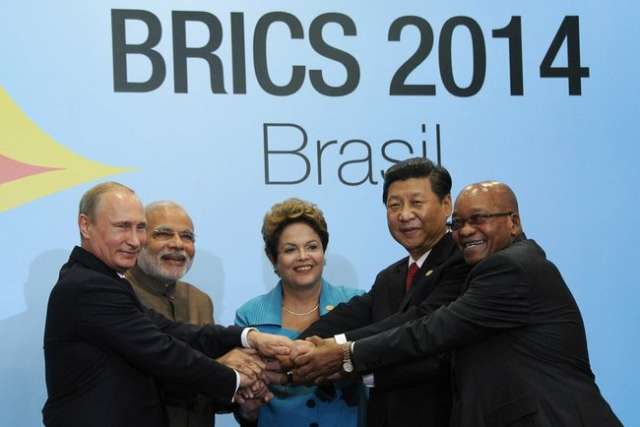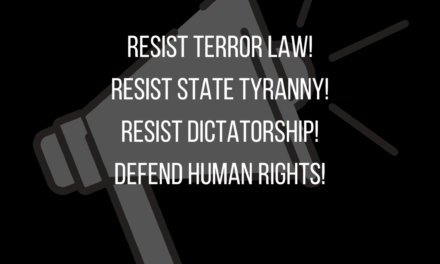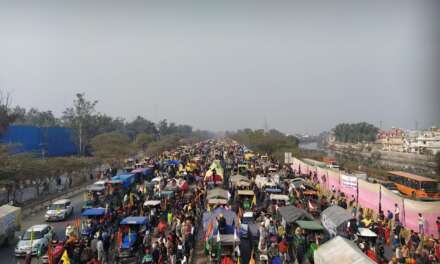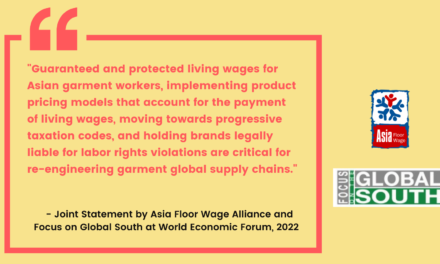BRICS, as is well known, was a name coined by Goldman Sachs analyst Jim O’Neill years ago to refer to promising emerging markets for finance capital that would extend the boom of the global economy in the first decade of the 21st century. But one can say that even if O’Neill had not invented the name, the BRICS would have emerged as a conscious formation of big, rapidly developing countries with an ambivalent relationship to the traditional center economies of Europe and the United States.
The BRICS are an important new global actor that the Philippines must learn to deal with. They are both collaborators and competitors to the traditional center economies of the United States and Europe. They offer both possibilities and perils for the Philippines should the country’s leadership opt to pursue a more independent trajectory in its foreign policy. This will be particularly challenging when it comes to the leading BRICS country: China.
The BRICS served notice that they are now an economic alliance that poses a challenge to the global status quo during their last summit in Brazil in mid-July, when they inaugurated two path-breaking institutions intended to rival the North-dominated International Monetary Fund and World Bank: a Contingency Reserve Arrangement, with an initial capitalization of $100 billion, that can be accessed by BRIC members undergoing balance of payments problems, and the “New Development Bank” with a total authorized capital of $100 billion that is open to all members of the United Nations.
Benefiting from globalization
The BRICS have been among the key beneficiaries of corporate-driven globalization, with their rise being associated with the marriage between global capital and the cheap labor that was released into the world capitalist economy with the integration into that system of large formerly non-capitalist, semi-capitalist, or peripheral capitalist economic regimes in the last thirty years. This union was among the factors that kept up the rate of profit and raised global capitalism out of its crisis of stagnation in the 1970’s and 1980’s.
The BRICS are capitalist regimes. Their relationship to workers, a great part of who are migrants from the countryside, is perhaps the key consideration in determining the nature of the character of their ruling regimes. In China, for instance, though the Communist Party leadership retains its socialist ideological discourse, the reality is that thirty years after Deng Hsiao Ping’s pro-market reforms, the state is, in the words of the Slovenian philosopher Slavoj Zizek, “is today the ideal capitalist state: freedom for capital, with the state doing the ‘dirty job’ of controlling the workers. China as the emerging power of the twenty first century…seems to embody a new kind of capitalism: disregard for ecological consequences, disdain for workers’ rights, everything subordinated to the ruthless drive to develop and become the new world force.”
The other BRICS states may not have the same coercive and extractive power as the Chinese state, and three of them—Brazil, South Africa, and India—are electoral democracies, but all have relatively powerful central bureaucracies that have been the key instrument in the technocratic transformation of their economies. Lula’s Brazil, it might be noted, inherited the developmental state forged by the Brazilian military-technocratic elite that produced the so-called “Brazilian Miracle” in the 1960s and 1970’s, the African National Congress stepped into a centralized state apparatus that had been honed not only for repression but for extractive exploitation by the apartheid regime, and, of course, Putin’s Russia inherited the old super-centralized Soviet state.
While there might be a healthy discussion on whether all of these regimes might be called neoliberal, there can be no doubt that they are capitalist regimes, prioritizing profits over welfare goals, loosening prior restraints on market forces, spearheading the integration of the domestic to the global economy, following conservative fiscal and monetary policies, exhibiting a close cooperation between the state elite and dominant forces in the economy, and, most importantly, relying on the super-exploitation of their working classes as the engine of rapid growth.
Contradictions with the center economies
While the BRICS have been major beneficiaries of corporate-driven globalization, their integration into the world economy has been a process marked by complementarities and contradictions with the traditional center economies of Europe and the United States.
True, some of them, particularly China, have developed investment regimes extremely hospitable to foreign capital, but all have also manipulated foreign capital to accumulate technological and management expertise to eventually wean them off their dependence on the latter. Even as they have developed as dynamic centers of accumulation that energized or reenergized global capitalism as a whole, they have followed what might be termed as nationalist goals of enhancing their geopolitical and geoeconomic power vis-a-vis the traditional centers of global economic, political, and military power.
Their dialectical relationship to the dominant capitalist economies is what is missed by analysts who insist that the BRICS are being merely subordinates of the United States and do not see their rise as threatening the global economic hegemony of the United States and Europe. Complementarity and contradiction are the dialectical aspects of their relationship to the dominant powers, and this is exhibited most sharply in the relationship of China to the United States. US consumer demand served as the engine of rapid growth of the country’s export oriented economy, but China is increasingly challenging the hegemony of the US dollar as the global means of exchange and is currently in the process of supplanting the United States as the main investor and trading partner of many countries in Latin America, the US’s so-called “backyard.”
If competition is pronounced at the economic level, it is even fiercer at the geopolitical level since there is a great degree of “relative autonomy” between the political relations among states and the economic relations among countries. Reductionist analysis of the BRICS fails to fully appreciate the phenomenon of geopolitical rivalry. In recent years, for instance, Beijing has moved from its policy of “peaceful rise” on the global stage to overtly challenging the military power of the United States and Japan, two economies to which China is deeply integrated, in the Western Pacific.
At the same time, relations between Russia and Europe and the United States, two blocs with which Moscow has developed significant economic ties, especially when it comes to finance and energy, have deteriorated as the Putin government has pushed back against NATO’s expansion right onto Russia’s doorstep in the wake of the collapse of the Soviet Union.
From engines of growth to stagnation
In 2001, O’Neill identified the BRICS as the “drivers of global growth.” The next few years appeared to prove him right, as their performance on all key indicators, like the GDP growth rate, per capita income growth rate, and rates of return on investment, surpassed those of the US and other economies in the North. When the global financial crisis broke out, the BRICS at first seemed to be dragged down by the collapse of their markets in the North, with their growth rates slowing down significantly in 2008.
However, recovery was swift, triggered in some countries by countercyclical stimulus programs. In China, for instance, a $586 billion stimulus program that was, in relation to the size of the economy, bigger than Obama’s $787 billion stimulus in the US, reversed the economic contraction not only in China but also in neighboring economies that had become greatly dependent on the Chinese economy to absorb their products.
It was in this context of recovery in 2009 and 2010 that Nobel Prize laureate Michael Spence predicted in his book “The Next Convergence” that the BRICS would replace the US and Europe as the key engines of the world economy. In a decade, Spence confidently predicted, the BRICS share of global GDP would pass the 50 per cent mark. Much of this growth would stem from “endogenous growth drivers in emerging economies anchored by an expanding middle class.”
Moreover, as trade among the BRICS increased, “the future of emerging economies is one of reduced dependence on industrial-country demand.”
Hardly had Spence’s book come out when the performance of the BRICS put paid to his rosy predictions. Beginning in 2012, the stagnation of the global economy engulfed the BRICS in earnest, revealing the stimulus-triggered recovery of 2009 to be a short-term affair rather than a sustained passing of the baton of global growth from Europe and the US to the BRICS. Brazil’s growth rate dropped from 5.3 per cent in 2010 to 1.5 per cent in 2012, India’s from 8.2 to 3 per cent, Russia from 4.9 to 2.5 per cent, and China from 9.8 to 7.2 per cent. The near simultaneous slowing down of the BRICS’ growth was accompanied by foreign capital outflows, plunging currency values, rising inflation, and growing inequality.
The crisis of export-led growth
Export-oriented manufacturing based on the incorporation and exploitation of the hundreds of millions of the global reserve army of labor from non-capitalist, semi-capitalist, or pre-capitalist societies was the mode of integration of most of the BRICS into the global economy. This strategy focused priorities, incentives, and resources on the export sector, depressing demand and creating dislocations in the domestic market. With its dependence on the now stagnant or contracting markets of Europe and the United States, the export-oriented strategy has entered into severe crisis.
China’s crisis illustrates the difficulty of breaking away from the model of export-oriented production. As noted earlier, in 2008, in response to the crisis, China launched a $585 billion stimulus program to enable the domestic market to make up for the loss of export demand. Under the leadership of President Hu Jintao and Prime Minister Wen Jia Bao, this was meant to be a central step in the strategic transition to a new domestic-demand centered economy. Achieving some success at first, China, however, reverted back to export-led growth oriented towards the US and European markets. The reason for the retreat was explained by Yu Yong Ding, one of Beijing’s most influential economists.
With China’s trade-to-GDP ratio and exports-to-GDP ratio already respectively exceeding 60 percent and 30 percent, the economy cannot continue to depend on external demand to sustain growth. Unfortunately, with a large export sector that employs scores of millions of workers, his dependence has become structural. That means reducing China’s trade dependency and trade surplus is much more than a matter of adjusting macroeconomic policy.
Indeed, not only was the problem structural in nature. The retreat back to export-led growth reflected the powerful influence a set of forces from the reform period that, as Yu put it, “have morphed into vested interests, which are fighting hard to protect what they have.” The export lobby, which brings together private entrepreneurs, state enterprise managers, foreign investors, and government technocrats, remains the strongest lobby in Beijing.
Staying with the export-oriented model was a dead end according to Yu since China’s “growth pattern has now almost exhausted its potential.” The economy that most successfully rode the globalization wave, China “has reached a crucial juncture: without painful structural adjustments, the momentum of its economic growth could suddenly be lost. China’s rapid growth has been achieved at an extremely high cost. Only future generations will know the true price.”
The new leadership of President Xi Jin Ping realizes the challenge that confronts China, but whether it will be able to succeed where Hu Jin Tao failed remains to be seen. There is a race against time especially when it comes to heading off the impact of the worsening income distribution occasioned by neoliberal and export-oriented policies that prioritized the interests of investors, management, elite and middle class, and the export sector.
Social conflicts on the rise
The crisis of the export-oriented model is likely to exacerbate the social conflicts in the BRICS, which were already growing in intensity in the period of rapid growth.
Rising inequality is perhaps the most explosive problem faced by the BRICS. In Brazil, which has one of the highest rates of inequality in Latin America, with a gini coefficient of 51.9, the payback came in the form of riots throughout the country in 2013 triggered by an explosive combination of transportation fare raises, deteriorating public services, and displacements of urban residents and corruption connected with the construction of infrastructure for the 2013 Confederations Cup and the 2014 World Cup.
In South Africa, the illusion of BRICdom fostered by the 2010 World Cup was shaken by the protests of miners that climaxed with the infamous Marikana massacre, where troops fired on strikers and killed 44 in August 2012. Marikana exposed to the world a country where a developed country infrastructure coexisted with one of the world’s most unequal income structures, with South Africa’s gini index standing at 63.1.
In China, “mass incidents”—the euphemism for protests–doubled between 2006 and 2010, rising to 180,000, according to the Chinese Academy of Governance. The causes were varied, ranging from land grabs to official corruption to environmental degradation. Protests against pollution and other forms of ecological destabilization appeared to be particularly numerous and underlined the authorities’ subordinating the quality of life to the altar of high growth. In China and the other BRICS as well the notion appeared to reign that there was a trade-off between environmental protection and development.
In 2010, however, a successful strike for higher wages by workers of a Honda plant in Nanhai, Guangdong Province, inaugurated a new era of resistance, this time with the workers that had served as the backbone of export-oriented manufacturing in the lead. In June 2011, it was the turn of thousands of poorly paid garment workers in Zengcheng, the so-called “Blue Jeans” capital of the world to protest, with riots and strikes. These events were a dress rehearsal for the strikes involving some 30,000 workers in Dongguan, near Guanzhou, that hit the manufacturing subcontractor Yue Yuen, perhaps the largest producer of branded footwear in the world, in April 2014.
The significance of the labor strikes was pointed out in an article in “Jacobin”, the progressive electronic journal:
More than thirty years into the Communist Party’s project of market reform, China is undeniably the epicenter of global labor unrest. While there are no official statistics, it is certain that thousands, if not tens of thousands, of strikes take place each year. All of them are wildcat strikes – there is no such thing as a legal strike in China. So on a typical day anywhere from half a dozen to several dozen strikes are likely taking place.
The BRICS and the global south
The BRICS portray themselves as paragons of the global South, providing the leadership of such blocs as the “Group of 77 and China” in the climate negotiations and the “Group of 20” in the World Trade Organization. However, critics of the BRICS say that their investment and trade practices belie their benevolent posture towards developing countries.
Much of this criticism is directed at China. While it is acknowledged that China has poured billions of dollars in aid to Sub-Saharan Africa, much more, in fact, than the World Bank, it has also been criticized by the local population for bringing in Chinese workers instead of hiring local labor, for flooding retail markets with Chinese products, resulting in the bankruptcy of local garments firms, as in South Africa, and for supporting repressive regimes with economic assistance under the rationale of non-interference in the affairs of the sovereign states. In Southeast Asia, China’s economic diplomacy is said to be geared towards splitting the region on its collective stand on the South China Sea issue, isolating in particular the Philippines and Vietnam.
While many of these criticisms are valid, overall, the rise of the BRICS is a good development for the South. The BRICS currently fulfill the same role that the Soviet Union, before its collapse in the early 1990’s, played, which was to provide a pole which developing countries could play off against imperialism as they struggled to achieve political and economic independence. The dark period of unipolar domination by the United States, with its neoliberal institutions and ideology, has come to an end with the emergence of the BRICS bloc, and this is an extremely positive development.
For the Philippines, in particular, the challenge is how to foster good economic relations with China while promoting a peaceful, principled, and legal resolution of our conflicting territorial claims in the West Philippine Sea. Negotiating this route will involve assuring China that the country will move away from its current path of serving as a base for US power projection onto the Chinese mainland. Allowing our territorial disputes with China to isolate us from the BRICS, which are the leading forces in the Groups of 77 and China, the Non-Aligned Movement, the Group of 20 in the World Trade Organization, and the United Nations Conference on Trade and Development, would be a grave mistake.
The future of the BRICS
With export-oriented production and globalization entering into crisis, the question that emerges is what is the future of the BRICS?
That the BRICS will not move to break with their current paradigm of growth is certainly a possibility. However, there are serious discussions in ruling circles about ways to surmount the current crisis.
One option is for the BRICS to become more integrated with each other and with other developing country economies, along the lines of the strategy of “South-South Trade” or “South-South Cooperation” that has long been propounded by many progressive economists. Further integration is one of the key topics in the BRICS summits that now take place every two years. There is, however, one problem with this solution, and it is that the fruits of integration would be limited if it involved highly unequal societies with restricted demand since large parts of the population are left out of the market.
The other solution, of which the BRICS elites are not too enthusiastic about, is for the BRICS to adopt policies aimed at radically reducing income inequalities and thus creating vibrant domestic markets. The reason for the strong hesitations of the BRICS leaderships in taking this path is that it will involve no less than promoting a social revolution in these countries, since in South Africa, Brazil, India, and China, there are powerful interest groups that have congealed around the current economic regimes marked by conservative macroeconomic policies centered around export-oriented growth strategies. An even more fundamental question is, assuming that they can break with export-led growth, can the pursuit of policies promoting greater equality be undertaken within these countries’ current capitalist frameworks, where raising the levels of profitability remains the elites’ central concern?
The elites in the BRICS are dealing with the challenge of transformation in diverse ways. In India, the new BJP government of Narendra Modi seeks to revitalize the Indian economy by opening it up more fully to foreign investors and radically cutting down the budget deficit a la Tea Party partisans in the United States. This seems to be a prescription for continuing and deepening the past 25 years conservative neoliberal policies and thus is unlikely to succeed in surmounting the country’s stagnation.
Perhaps in this area, the bell weather among the BRICS is again China, where the current leadership is very much aware of the consequences of the previous leadership’s failure to make the break with the export-led growth model and make the transition to one based on a domestic market invigorated by radical asset and income redistribution. Whether Xi Jin Ping succeeds where Hu Jin Tao failed remains to be seen.
Whatever strategies the BRICS may follow in the coming period, their competition is likely to intensify with the center economies even as their long pent-up domestic pressures are released in a staccato of internal social explosions.
*INQUIRER.net columnist Walden Bello is a representative of the party Akbayan (Citizens’ Action Party) in the House of Representatives of the Philippines. He is also the author of 18 books, the latest of which is “Capitalism’s Last Stand: Deglobalization in the Age of Austerity” (London: Zed, 2014). This column is adapted from a longer essay in the book “Shifting Power – Critical perspectives on Emerging Economies”, edited by Nic Buxton and Nicola Bullard (Amsterdam: Transnational Institute, 2014).










